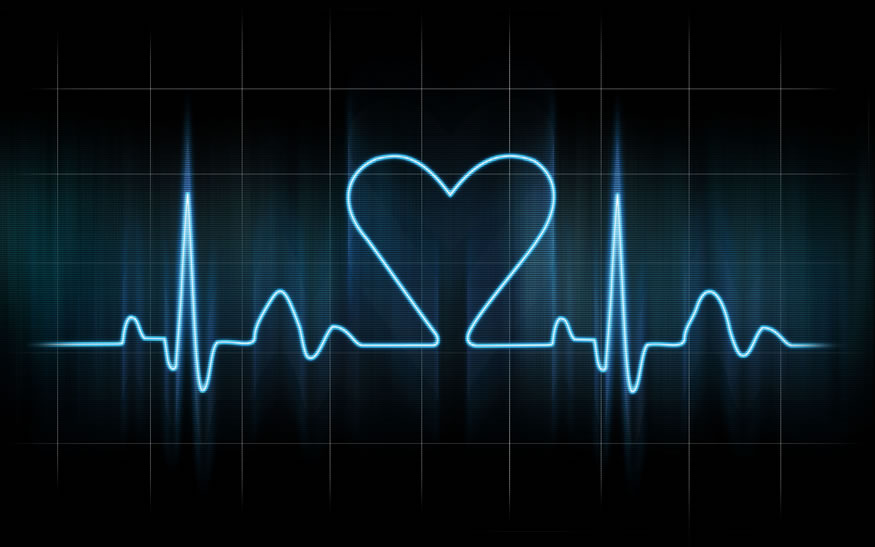
© TheShorty6636 / DeviantArt
The objective of this study was to investigate the synchronization between low-frequency breathing patterns and respiratory sinus arrhythmia (RSA) of heart rate during guided recitation of poetry, i.e., recitation of hexameter verse from ancient Greek literature performed in a therapeutic setting. Twenty healthy volunteers performed three different types of exercises with respect to a cross-sectional comparison:
1) recitation of hexameter verse, 2) controlled breathing, and 3) spontaneous breathing. Each exercise was divided into three successive measurements: a 15-min baseline measurement (S1), 20 min of exercise, and a 15-min effect measurement (S2). Breathing patterns and RSA were derived from respiratory traces and electrocardiograms, respectively, which were recorded simultaneously using an ambulatory device. The synchronization was then quantified by the index
γ, which has been adopted from the analysis of weakly coupled chaotic oscillators. During recitation of hexameter verse,
γ was high, indicating prominent cardiorespiratory synchronization. The controlled breathing exercise showed cardiorespiratory synchronization to a lesser extent and all resting periods (S1 and S2) had even fewer cardiorespiratory synchronization. During spontaneous breathing, cardiorespiratory synchronization was minimal and hardly observable. The results were largely determined by the extent of a low-frequency component in the breathing oscillations that emerged from the design of hexameter recitation.
In conclusion, recitation of hexameter verse exerts a strong influence on RSA by a prominent low-frequency component in the breathing pattern, generating a strong cardiorespiratory synchronization.
The effects of different breathing frequencies and patterns on cardiovascular regulation have been investigated extensively in recent years. In this context, various effects of poetry recitation on cardiovascular parameters, especially on heart rate oscillations, have been demonstrated (
4,
9,
50).
Bernardi et al. (4) found a frequency adjustment of breathing oscillations with endogenous blood pressure fluctuations (Mayer waves) and even cerebral blood flow oscillations during the recitation of the rosary and the "OM" mantra. This effect was attributed to the breathing frequency of ∼6 breaths/min induced by the metric of both religious verses. Furthermore, they noticed an increased arterial baroreflex sensitivity, which is a favorable long-term prognostic factor in cardiac patients (
3). In another study, Bernardi et al. (
5) observed a significant increase in arterial oxygen saturation (SaO2) during controlled breathing at frequencies of 15/6/3 breaths/min in patients with chronic heart failure and healthy controls. The strongest increase was found at a breathing frequency of 6 breaths/min.
Thus recitation of specific poetry as a means to control breathing patterns was proposed and the rosary prayer to be "viewed as a health practice as well as a religious practice" (
4).
In our own investigations on cardiovascular and cardiorespiratory regulation during and after recitation of poetry, we were led by the observation of therapists that creative arts greatly influence well-being in humans by various means.
On a psychosomatic level, these therapies increase the salutogenetic potential in humans (
2,
17). Furthermore, the autonomic regulation is affected to enhance the flexibility of regulatory processes to maintain stability and coherence between different functions. As a result, a temporal order of physiological functions appears (
20). This seems to apply especially when therapeutic speech as rhythmic poetry is recited using different breathing modalities. These breathing modalities are used to activate or calm down the patient. For example, some exercises of Anthroposophic Therapeutic Speech (ATS) (
14), which is originally based on the philosophy of R. Steiner,
use the recitation of poetry to treat stress-related symptoms in the cardiorespiratory system (
50).
The physiological influences of various breathing patterns on heart rate fluctuations are well known (
1,
6,
15,
21). Thus, in a first study, we (
50) examined heart rate variability (HRV) in healthy subjects during and after recitation of poetry. Two different examples of old poetry, hexameter and alliterative verse, were used.
Although no pacemakers had been used, recitation of hexameter verse always modulated heart rate at a frequency of 12 and 6 beats/min (i.e., 2:1 frequency ratio). Furthermore, during 15 min of rest after the exercise, an increased high-frequency component of HRV (
50) and a predominance of typical short "heart rate patterns" resulting from intermittent cardiorespiratory synchronization were observed (
9). In contrast, these observations were not found during/after normal conversation, which was used as a control exercise.
Thus recitation of poetry changed cardiorespiratory interaction, whereas normal conversation did not.
Many features of the cardiorespiratory control during recitation of poetry are still unknown. Recently, on the basis of simultaneous recordings of an electrocardiogram (ECG) and a respiratory trace, new techniques for the analysis of cardiorespiratory interaction have been developed (
41,
42). They unambiguously revealed that heart rate and respiration may intermittently synchronize. The application of these techniques promises new information about the cardiorespiratory interaction, e.g., after myocardial infarction (
22,
25).
In this study, we investigated the cardiorespiratory synchronization in healthy subjects during recitation of hexameter verse because our first results were most obvious with this exercise. Cardiorespiratory synchronization was analyzed with respect to a respiratory trace and the oscillations in heart rate induced by respiration, i.e., respiratory sinus arrhythmia (RSA). For this purpose, we adapted recently developed techniques because they offer to define a continuous phase that may easily be analyzed (
23,
43). We show that this technique is able to capture important information. Three different exercises were compared using a cross-sectional study design:
1) recitation of hexameter verse,
2) controlled breathing, and
3) spontaneous breathing. The results of this study may improve our understanding of regulatory processes that maintain stability and coherence between different physiological functions because cardiorespiratory interaction seems to play a crucial role in this context.
Read more of the study.
Reader Comments
to our Newsletter